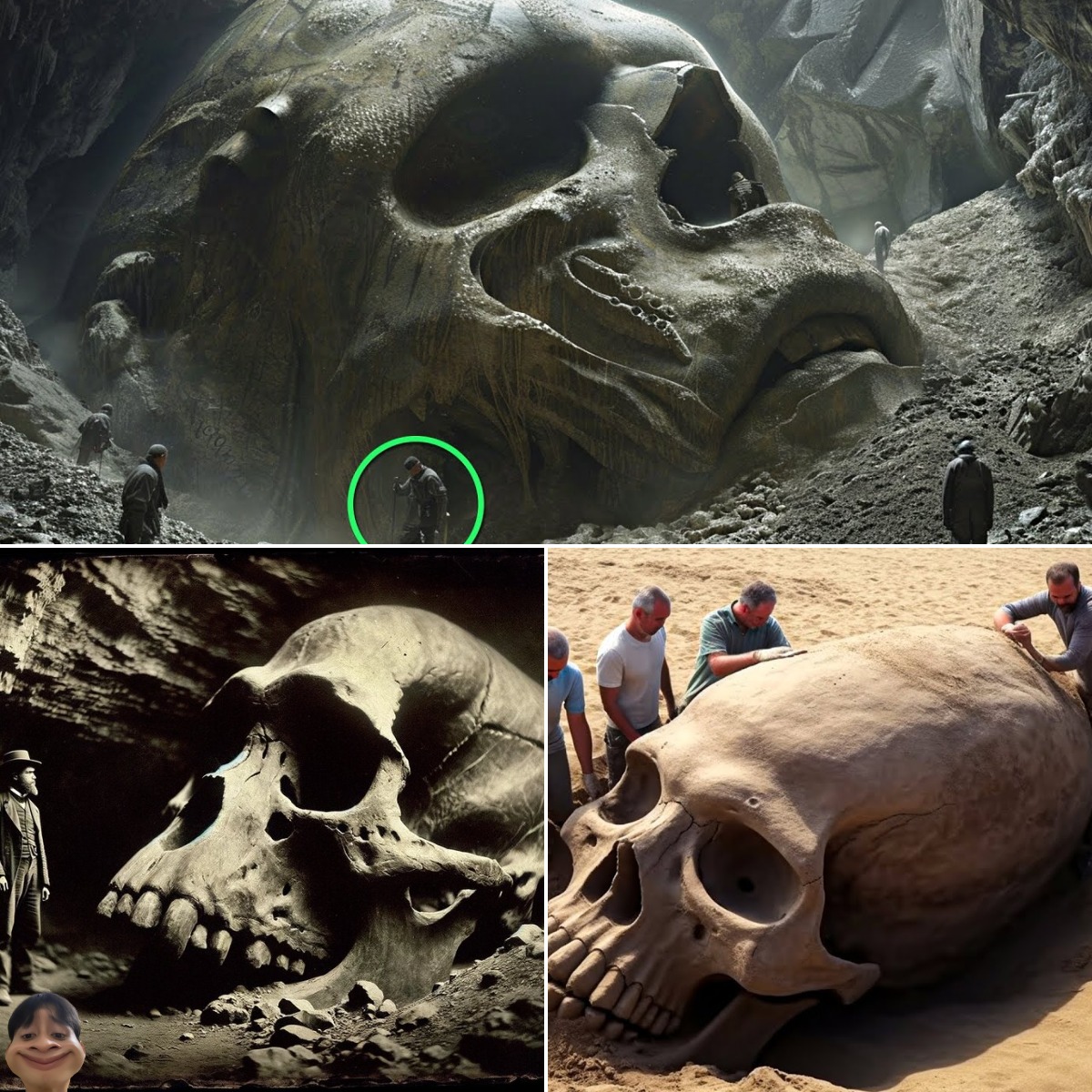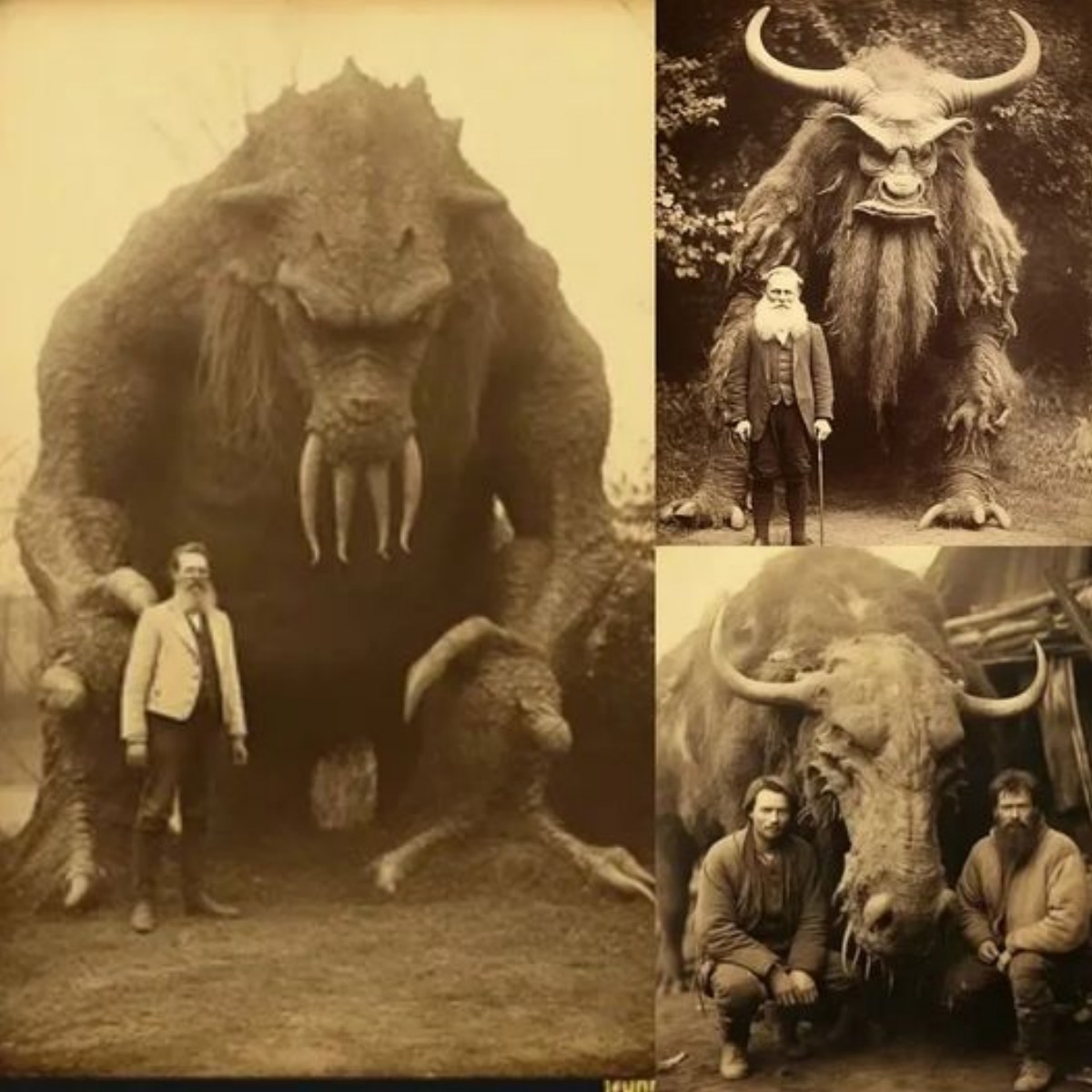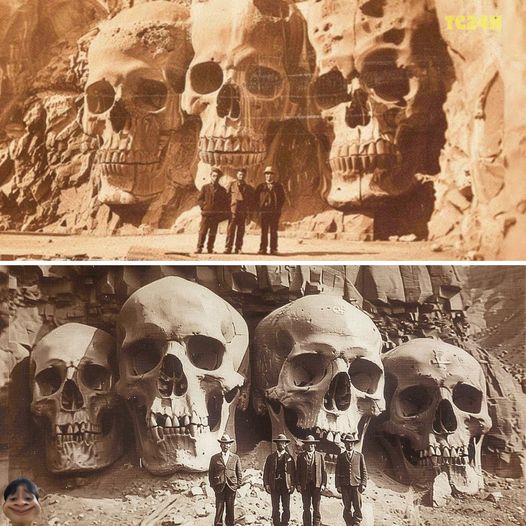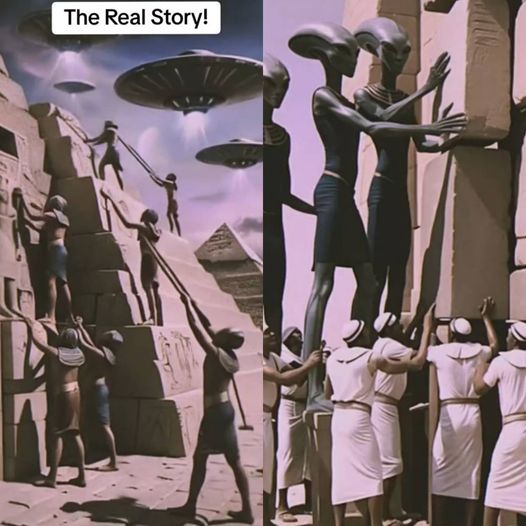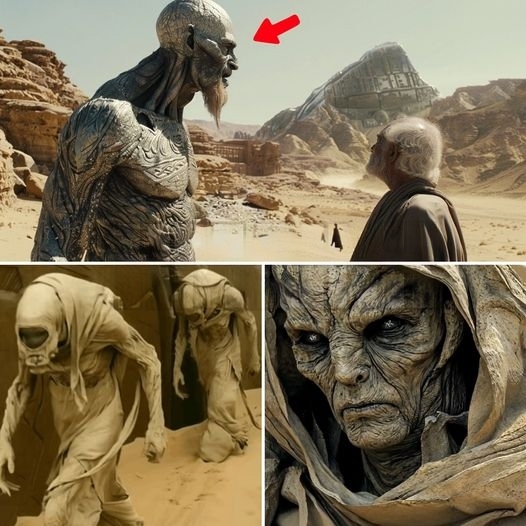Himera…was conquered by force and the barbarians gave themselves to a long ruthless massacre of all those who remained there (…) Hannibal plundered the sacred places and, snatching away the people who took refuge there, set them on fire and razed the city to the ground, which had been inhabited for 240 years…”_Diodorus Siculus, Bibliotheca historica, 1st century BC._
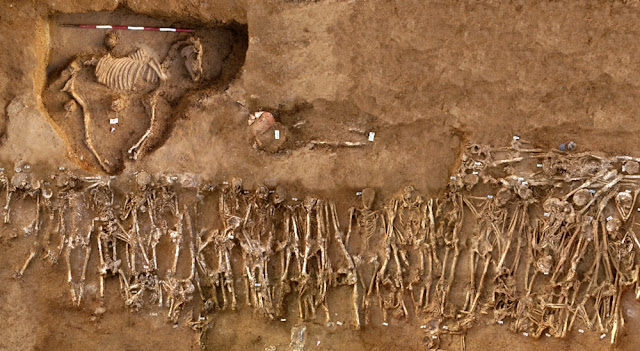
Common grave of those fallen in the Battle of Himera in 409 BC and burial of a horse
A necropolis with more than 12,000 almost untouched burials from the Archaic and Classical periods, many of which are rich in grave goods, was discovered between 2008 and 2011, during work on the expansion of the railway line at the site of the ancient Greek city of Himera, the remains of which lie within the borders of the modern Sicilian comune of Termini Imerese.
Many of these burials are associated with an infamous page in the history of the ancient city, located on the strategic border between Hellenic Sicily and the area controlled by the Phoenicians: a vicious battle fought between the Greeks and Carthaginians in 480 BC.
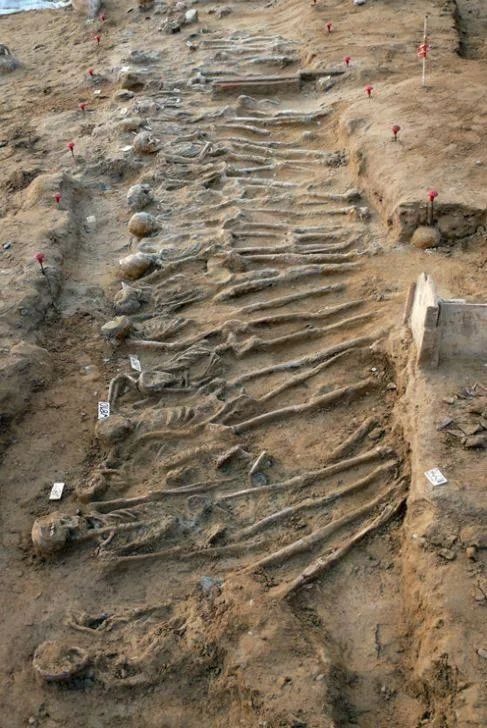
View of one of the mass graves of soldiers 𝓀𝒾𝓁𝓁ed in battle
The former prevailed, as evidenced by the discovery of the remains of the Temple of Victory, erected to mark the occasion, but in 409 BC the Carthaginians took revenge by besieging and razing the city.
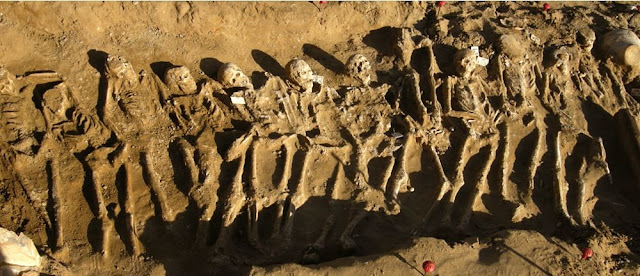 View of one of the mass graves of soldiers 𝓀𝒾𝓁𝓁ed in battle
View of one of the mass graves of soldiers 𝓀𝒾𝓁𝓁ed in battle
Unequivocal evidence of these two epic clashes can be seen in the thousands of skeletons of men and horses, found in mass graves and in individual burials.
There are as many as nine mass graves (seven associated with the battle of 480 BC and two with the battle of 409 BC) containing the bodies of those who fell in battle – arranged in an orderly fashion, one next to the other, in numbers varying from two to more than fifty.

View of the Himera necropolis
According to archaeologists, about thirty burials of horses, probably 𝓀𝒾𝓁𝓁ed in the battle of 480 BC, were likewise interred in the area of the necropolis, near the mass graves.
The discovery of two bronze greaves of the Iberian type confirm what Herodotus wrote, regarding the presence, in the Carthaginian army commanded by Hamilcar, of mercenaries from various parts of the Western Mediterranean.
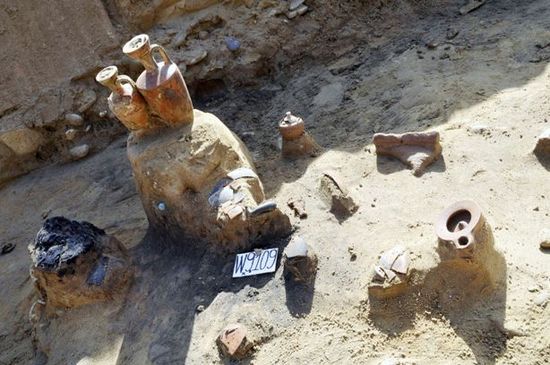
Finds in the Himera necropolis
The finds from this the largest Greek necropolis ever discovered in Sicily, which have remained locked in sixteen crates in a warehouse for 10 years, is now finally being transferred to Palermo where they will be displayed in the Real Albergo dei Poveri, a Bourbon-era building.
The issue was raised by a parliamentary question tabled last summer by Luigi Sunseri (Cinquestelle), a regional member of parliament, to whom the Regional Department of Cultural Heritage, chaired by the archaeologist Sebastiano Tusa, replied in detail.
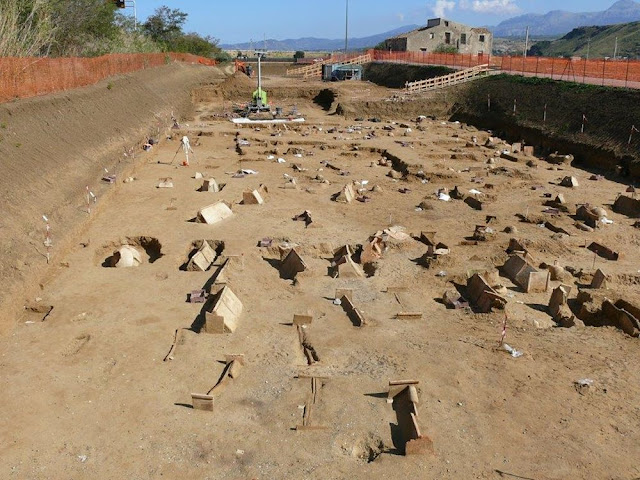
View of the vast Himera necropolis
The arrangement is expected to be temporary in the hope, Sunseri said, that the finds can soon find a worthy museum location in Termini Imerese from whose territory they come. The aim is to make them an important tourist-cultural attraction with all the economic implications that follow. “This”, added the deputy, “is an invaluable heritage that cries out for mercy and requires an adequate location.”
For three years, between 2008 and 2011, a highly talented team of specialists, including archaeologists, anthropologists, restorers and illustrators, led by the Archaeological Superintendence of Palermo, has been engaged in daily excavation activities.
The constant presence of anthropologists, led by Prof. Pier Francesco Fabbri of the University of Salento, has made it possible to collect important information related to the life and culture of the local population, as in the case of the burials of soldiers 𝓀𝒾𝓁𝓁ed in the battles of Himera in 480 and 409 BC.
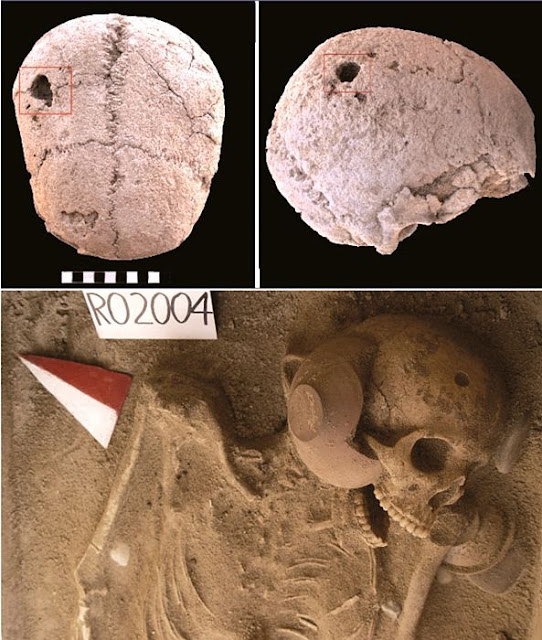
Part of the skeleton and skull of the girl with signs of cranial surgery
The tombs have mostly re-emerged at a depth of about three metres below ground level, covered by a very compact and homogeneous layer that over the centuries has protected the necropolis. Scholars speculate that possible flooding of the sea or the nearby river may have contributed to this.
During the excavations, various types of graves were found: they range from simple graves dug into the sand, to wooden coffins, stone sarcophagi to cremation burials.
Skeletons of new𝐛𝐨𝐫𝐧s have also been found, placed in terracotta amphorae in the shape of a uterus (enchytrismoi), bearing witness to the high infant mortality rate of the time, the risk of which was particularly high between 𝐛𝐢𝐫𝐭𝐡 and six months of age.
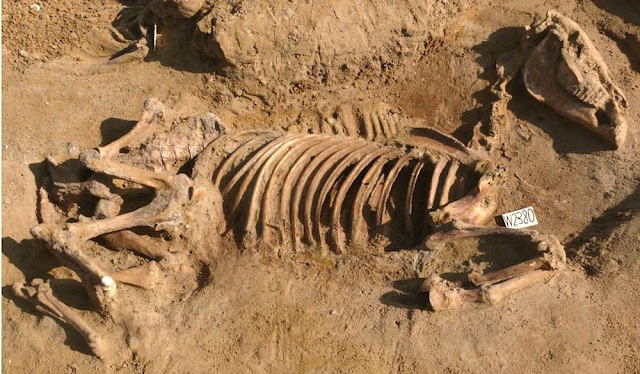
One of the burials of horses found in Himera
Anthropological studies were carried out to determine the age, 𝓈ℯ𝓍, height, diseases and nutritional aspects of the deceased, as well as the types of funeral rituals used.
With the Universities of North Colorado, Georgia and Salento, research has been activated on aspects of bioarchaeology, with DNA analysis, useful to investigate human adaptation to the environment and paleonutrition in Himera and in the ancient Mediterranean.
Also interesting is the evidence of cranial surgery performed on a 19-21 year old girl, who lived between the sixth and fifth centuries BC, and who had a circular drill hole (13 mm in diametre) on the right side of the skull. An operation that evidently had no therapeutic effects but which nonetheless testifies to the existence in Himera of a school of advanced medicine.
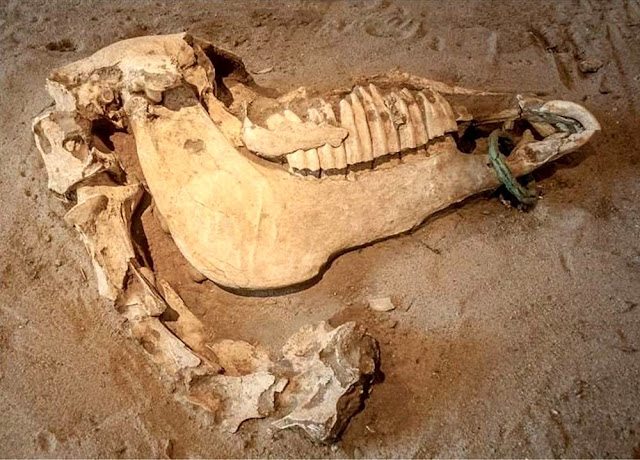
Skull of a horse buried in Himera with bronze bit
The high concentration of males is in fact what links most of the mass graves, to the two great battles of 480 and 409 BC, rather than attributing the high mortality rate to epidemics or other tragic natural events that would inevitably have involved women and 𝘤𝘩𝘪𝘭𝘥ren.
They are in fact individuals aged between 15 and 57 years, with traces of deep wounds caused by cutting or throwing weapons, some of which – such as arrows, spear heads, swords, daggers – were still found embedded in the skeletons because they were not removed before burial. The study of these types of finds has made it possible to reconstruct the dynamics of duels between soldiers and the battle techniques of the time.
The burials of thirty horses are traced back by experts to the clash of 480 BC. A detailed study has been made of these remains and which will significantly illuminate both archaeological and zoological aspects.
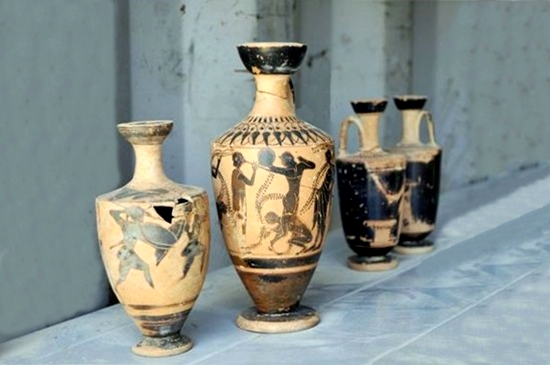
Lekythoi found in the Himera necropolis
Signs that the mass slaughter of 409 BC also involved a large part of the civilian population have also been found, especially in the eastern part of the necropolis, in front of the city walls, especially in the upper layers: here hundreds of skeletons were placed chaotically, with men and women of all ages and bones sometimes no longer anatomically connected. These are probably disorderly burials made in a hurry by the survivors of the great massacre.
At the site of the discovery, great care was taken to analyse the finds, to carry out photographic documentation, cleaning, consolidation, assembly of the fragments, integration of missing parts, final protection with microcrystalline wax, labelling and storage.
Two restoration laboratories have been set up – one for the restoration of large ceramic vessels, the other for the restoration of small items, such as funerary objects – which have enabled more than 6,000 restorations to be carried out.
In short, an enormous amount of work and a vast wealth of knowledge on a Greek city and its funeral practices, made even more poignant by the state of neglect in which everything had been left to stagnate, until the recent turning point.
Source: Fame Di Sud [November 21, 2018]Related video:
